Making a Beeline for the Big Island
Honey candy is a big favorite here at Candy Atlas. And we are not alone in our love of honey. Honey is a popular candy ingredient all around the world: the British have their decadent chocolate-dipped cinder toffee, the Dutch offer soft honey licorice drops, and the Americans have long-enjoyed a sticky taffy treat called Bit-O-Honey. With honey being such a popular addition to confections, we couldn’t help but want to learn more about how honey is created.
In the spirit of inquiry, we did the thing that sounds most fun. We buzzed off to the Big Island of Hawaii to meet some bees. Tucked along a scenic road in Captain Cook, we experienced one of the world’s leading honey farms — Big Island Bees.
Arriving at Big Island Bees, stacks of pastel beehives and a jaw-dropping view of Kealakekua Bay greeted us. The charming and then some Big Island Bees Honey and Beekeeping Museum welcomed us with neat wall and table displays featuring tools used by beekeepers and informative texts with beautiful illustrations about the fascinating world of bees. The museum was opened in 2012 by fourth-generation beekeeper Garnett Puett as a way to educate people about bees and their importance in pollinating one-third of all food grown in the world. With all we were learning before the tour even started, our simple appreciation for honey was blossoming into a deep admiration for the bee.
Then we met Laryssa, Honey Bee Docent. With an appealing breezy manner, Laryssa delivered an engaging lesson about life in a modern beehive and the process of extracting honey. We learned about the roles of the queen bee, the worker bees, and the drones. We learned that the Big Island is in flower all year, so bees can forage on the abundant supply of each season’s dominant bloom. The single-flower honeys produced capture the distinctiveness of each beautiful flower. In the case of Big Island Bees, this means the honey produced will be from macadamia nut, Wilelaiki (Christmas Berry), or Ohi’a Lehua (a tree that grows out of a lava flow) blossoms, depending on the time of the year.
Laryssa then donned her beekeeper’s suit and led the group to the bee yard — more formally called an apiary — to watch bees in an observation hive. We stood in a screened area as our bee docent removed frames from a beehive to give us up-close views of the inner-workings of a bee colony. As we observed various bee behaviors, Laryssa pointed out the different parts of the hive and explained what was going on. We saw honey and pollen, we saw larvae, and we saw bees –lots of impossibly photogenic bees.
As the tour came to its close, Kevin, the retail manager, offered us delicious samples of each of the three single-blossom honeys produced by Big Island Bees. You know how we usually think of chocolate as a product that is given its characteristic taste and flavor by its environment? The exact same can be said of honey. Each varietal presented had its own unique taste. For example, the macadamia nut blossom honey is sweet and dark with a rich finish but the Wilelaiki honey is spicy and orange and not as sweet. Big Island Bees honey really offers a taste of the terroir of the Big Island — a surprisingly verdant volcanic island.
If you would like to make a reservation for the free tour or order honey, contact Big Island Bees at 808-328-1315 or visit BigIslandBees.com.
Share:


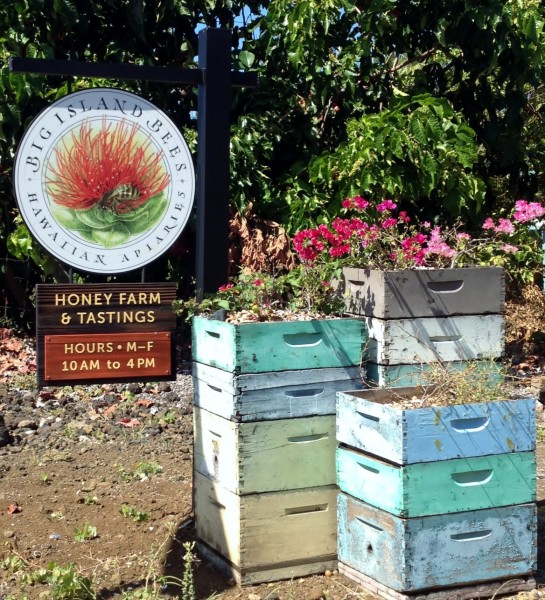
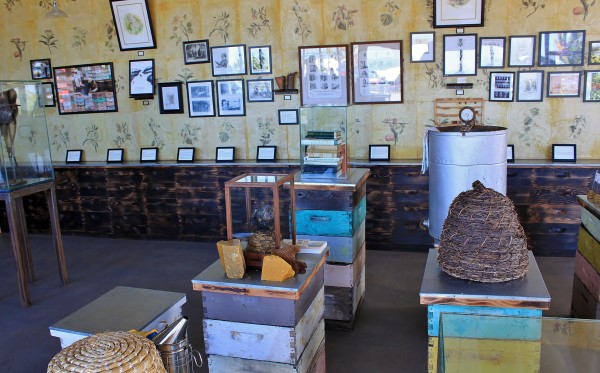
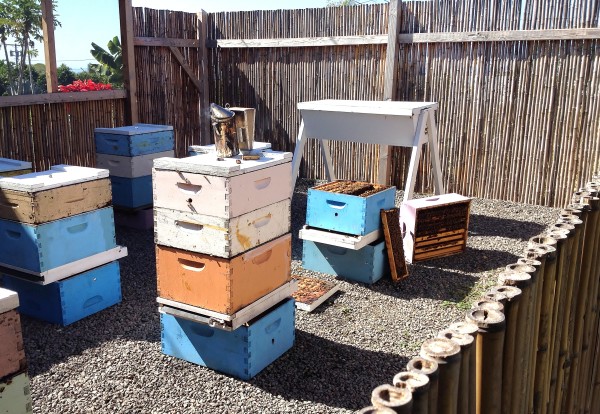
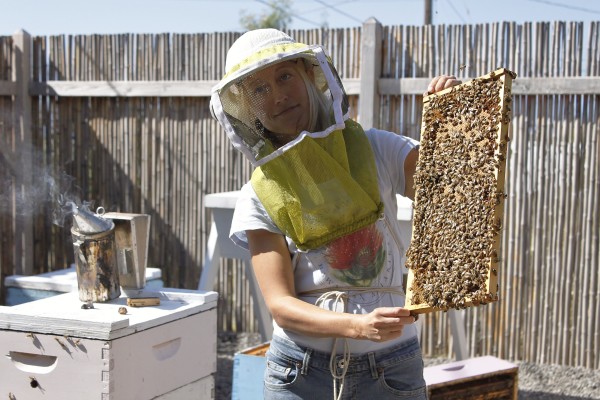
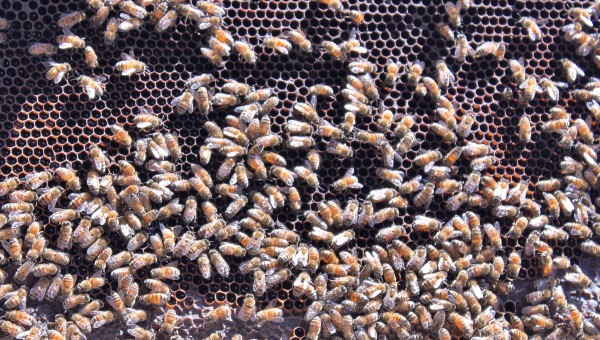
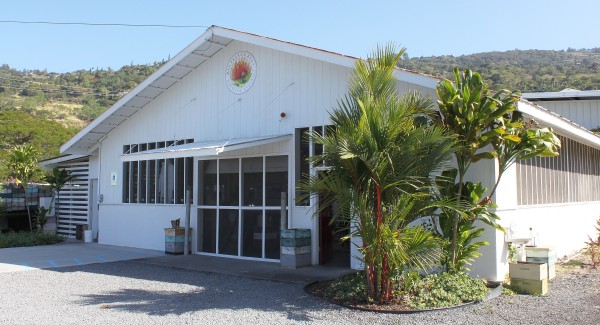





Comments
One Response to Making a Beeline for the Big Island
Pingback: One Perfect Day in South Kona – Candy Atlas